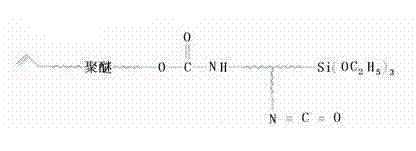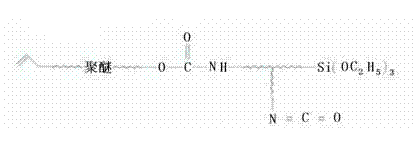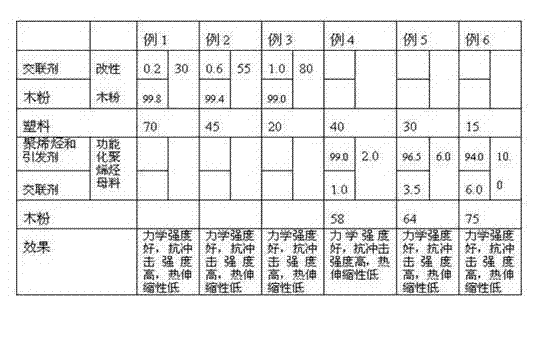Wood-plastic composite material and manufacturing method thereof
A wood-plastic composite material and plastic technology, applied in the field of composite materials, can solve the problems of high comprehensive cost, damage to wood color and taste, and small material selectivity, and achieve the effect of large material selection range, difficult surface migration, and high addition ratio
- Summary
- Abstract
- Description
- Claims
- Application Information
AI Technical Summary
Problems solved by technology
Method used
Image
Examples
Embodiment Construction
[0011] Now in conjunction with embodiment the present invention is described in further detail:
[0012] Embodiment 1 of the present invention makes the wood-plastic composite material by mixing 0.2~1wt% of polyisocyanate hydrocarbyl polymer silane with a molecular weight greater than 10000 with wood flour to obtain modified wood flour, and then mixing 30~80wt% Modified wood powder is mixed with plastic to make wood-plastic products.
[0013] The molecular formula of polyisocyanate hydrocarbyl polymer silane is as follows:
[0014]
[0015] Example 2 of the present invention, the wood-plastic composite material production method is realized in this way, with 0.3-0.5wt% dicumyl peroxide (DCP) as the initiator, 1-6wt% polyisocyanate hydrocarbon-based polymer with a molecular weight greater than 10000 The functionalized polyolefin masterbatch is prepared by reacting silane with polyolefin, and 2~10wt% functionalized polyolefin masterbatch is mixed with wood powder and 15~40wt...
PUM
 Login to View More
Login to View More Abstract
Description
Claims
Application Information
 Login to View More
Login to View More - R&D
- Intellectual Property
- Life Sciences
- Materials
- Tech Scout
- Unparalleled Data Quality
- Higher Quality Content
- 60% Fewer Hallucinations
Browse by: Latest US Patents, China's latest patents, Technical Efficacy Thesaurus, Application Domain, Technology Topic, Popular Technical Reports.
© 2025 PatSnap. All rights reserved.Legal|Privacy policy|Modern Slavery Act Transparency Statement|Sitemap|About US| Contact US: help@patsnap.com



